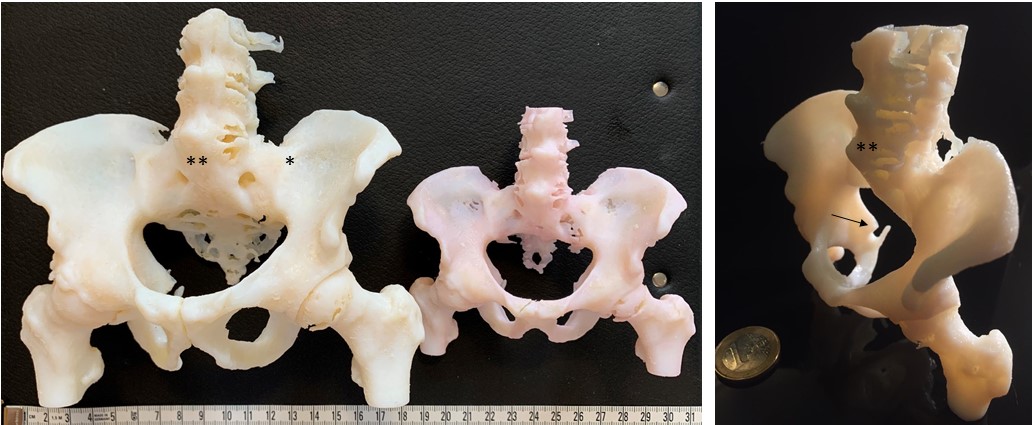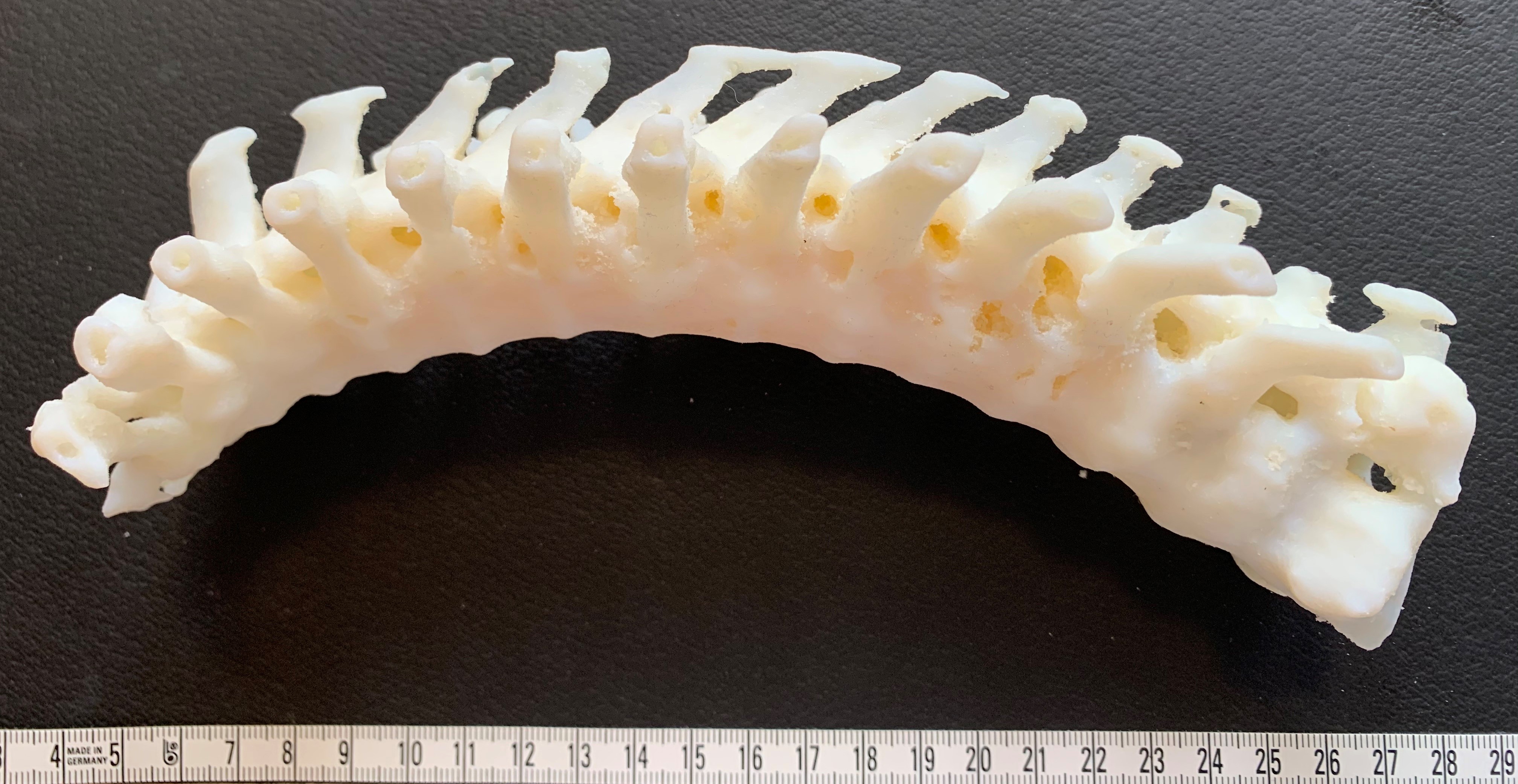Session Information
Date: Friday, November 6, 2020
Title: Miscellaneous Rheumatic & Inflammatory Diseases Poster I: Diagnosis and Testing
Session Type: Poster Session A
Session Time: 9:00AM-11:00AM
Background/Purpose: Rheumatology is underrepresented in the medical training of students in Germany. [1] Tools and methods are needed to inspire young students for specialist training as a rheumatologist.
3D printing as a rapid prototyping technology is a suitable method to display bone pathologies vividly and realistically. Recently we could show the usage of 3D printed models of peripheral joints of patients with rheumatic diseases for patient education.[2] However the feasibility to 3D print pathologies from rheumatic disease affecting the axial skeleton and their possible application field in rheumatology training for students has not been assessed yet.
Methods: Routinely acquired computed tomography data (2mm layer thickness) from the pelvic and spine from two patients with longstanding ankylosing spondylitis were used.Both data sets were segmented (surface rendering Osirix Lite) and converted to an STL surface model (Osirix Lite). After post processing, these models were 3D printed with the polyjet polymer technique (Objet30, Stratasys).[2]
Results: This approach allowed the prototyping of the pelvis and thoracic spine illustrating typical pathologies such as ankylosing syndesmophytes of the spine, enthesiophytes of various enthesial sites as well as ankylosing SI joints in great detail. Images of the pelvis with lumbar spine as well as the thoracic spine are displayed in Figure 1 and 2. We were able to produce different sizes of these models. Sizes are displayed in Figure 1. Printing time was 24 hours with material costs of about 300 Euro for the largest prototype.
These models are now used in the multimodal teaching concept “Rheuma begreifen” (Understanding Rheumatism) at the the Skills Lab of the University Erlangen-Nuremberg.
Instructions for usage are given, an evaluation and interim examination are currently performed
Conclusion: Bone pathologies caused by spondylitis ankylosans can be presented and haptically understood by 3D printed models. This can supplement rheumatological teaching and also patient education in the future.
References:
- Riemekasten, G., et al., [Rheumatology – Integration into student training (RISA) : Current structure of clinical rheumatology in German universities (RISA III)]. Z Rheumatol, 2016. 75(5): p. 493-501.
- Kleyer, A., et al., Development of three-dimensional prints of arthritic joints for supporting patients’ awareness to structural damage. Arthritis research & therapy, 2017. 19(1): p. 34.
 Figure 1 shows 3D prototypes of the pelvis and lumbar spine. * marks SI ankylosis ** ankylosis of the spine; the arrow marks large enthesiophytes at the tuber ischiadicum
Figure 1 shows 3D prototypes of the pelvis and lumbar spine. * marks SI ankylosis ** ankylosis of the spine; the arrow marks large enthesiophytes at the tuber ischiadicum
 Figure 2 Displays the print out of the spine, including ankylosing syndesmophytes as well as partially merged processi spinosi
Figure 2 Displays the print out of the spine, including ankylosing syndesmophytes as well as partially merged processi spinosi
To cite this abstract in AMA style:
Kleyer A, Pachowsky M, Schuster L, Valor-Mendez L, Schett G, Hueber A, Simon D. Understanding Ankylosing Spondylitis – [abstract]. Arthritis Rheumatol. 2020; 72 (suppl 10). https://acrabstracts.org/abstract/understanding-ankylosing-spondylitis/. Accessed .« Back to ACR Convergence 2020
ACR Meeting Abstracts - https://acrabstracts.org/abstract/understanding-ankylosing-spondylitis/
